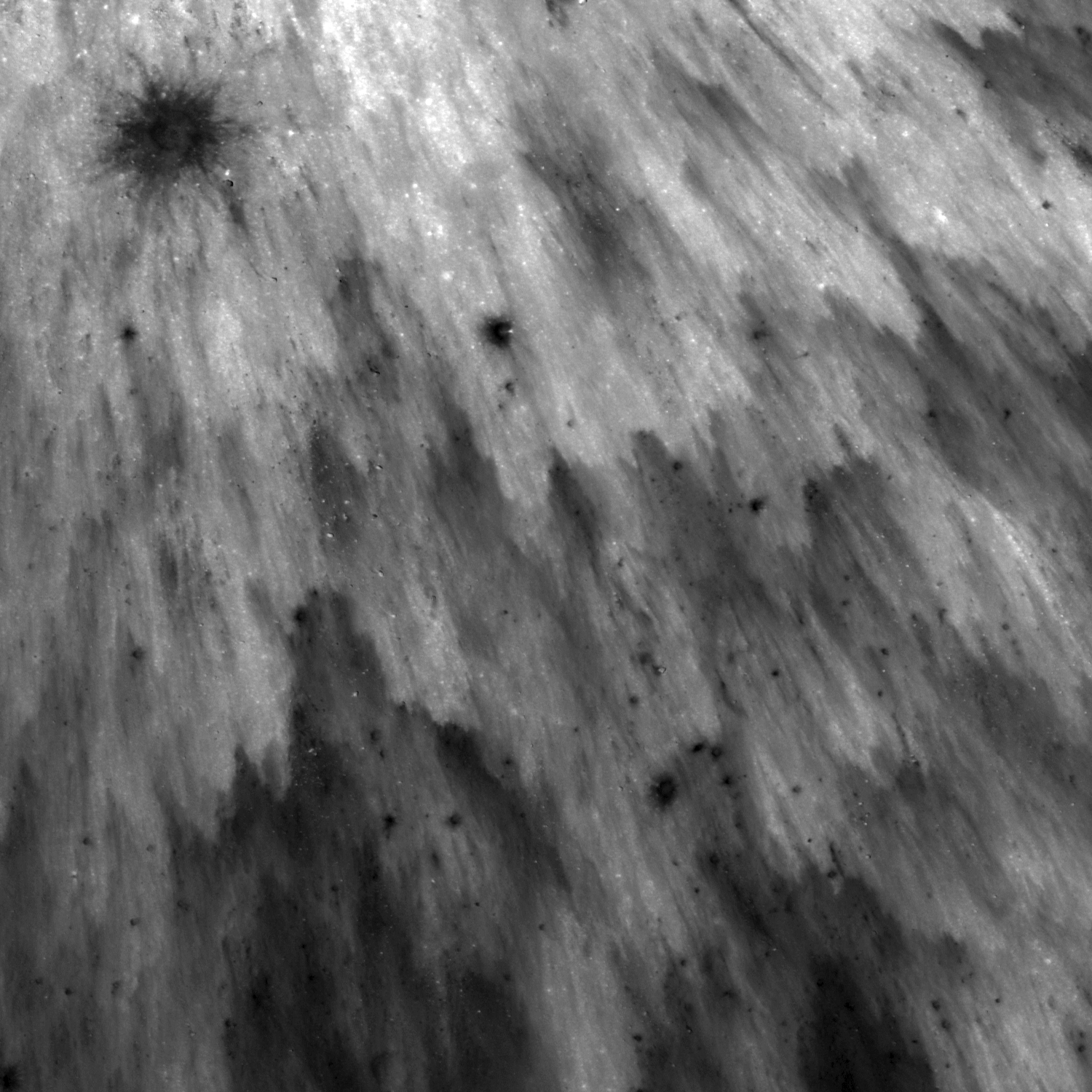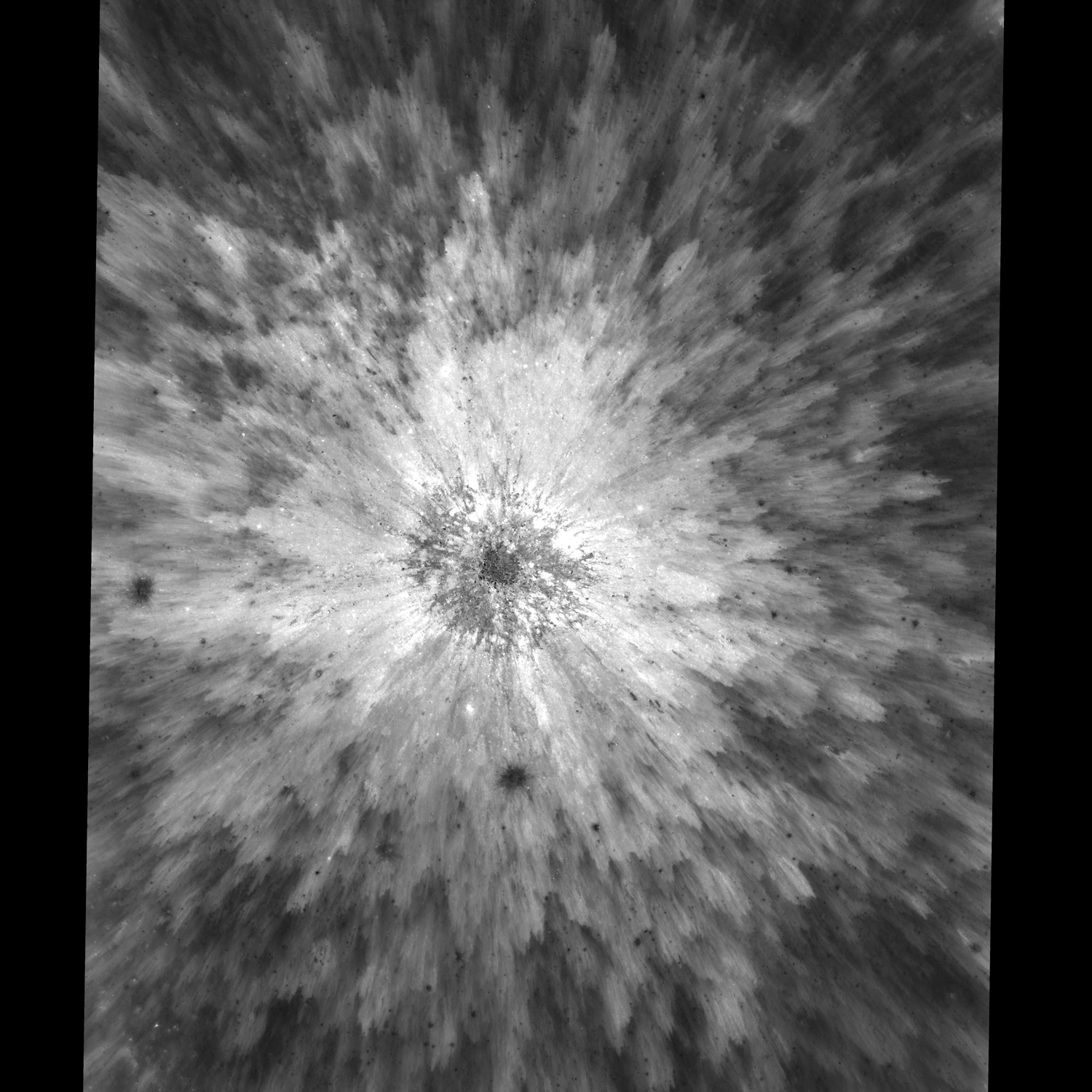
This small crater displays a beautiful ejecta pattern resembling a starburst. Looking at this image you can almost imagine the shower of ejecta falling to the ground. The pattern formed out of high and low reflectance areas is due to the freshness of the ejecta. Notice in the second image that as you move away from the center of the crater, the overall reflectance of the ejecta gets lower (darker). This is because the ejecta is less continuous as you get further away from the crater.
There are two low reflectance (darker) spots in the ejecta, one just south of the main crater and another just west of it. If you look closely, these spots are actually small craters with their own ejecta, probably secondaries from the primary impact. They excavated material from beneath the ejecta blanket and that material has a lower albedo compared to the ejecta.
Explore the entire NAC Frame!
Related Images:
Delicate patterns in Giordano Bruno ejecta
Published by Sarah Braden on 21 April 2011
